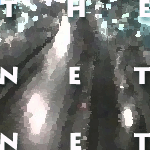Janine Benyus is a science writer whose primary published interest has been wildlife. The author of several books, her new offering, Biomimicry, takes on the whole world, showing her readers the ways that modern scientists are striving to make products and processes in nature's image. Biomimicry leaps from farming to energy storage to textiles to medicine to computing but stays close to one theme: How can we take advantage of the systems used by the natural world rather than squandering materials and energy only to yield substandard products and toxic by-products?
Each of the chapters in Biomimicry is based on interviews with one or more scientists. Benyus interviewed people who love their work, and she is clearly caught up in their enthusiasm as they tell her about the research that most excites them. The informality of many of the passages in this book -- sections have titles like "Along Came a Spider" and "Plop Plop Fizz Fizz" -- make this book pleasant to read but undermine its seriousness to some extent. In particular, somewhat overlyrical or overlong descriptions of the elegance of nature's solutions seem almost frivolous in the face of the still substantive obstacles that prevent us from implementing these solutions any time soon.
Biomimicry is still a fun read. It's particularly satisfying on the "Gee whiz, nature's cool! Why can't we could do that!" score, and it does ably weave that fascination with reports of businesses and researchers striving to emulate nature in the face of shrinking resources and increasing waste. It even includes the requisite example of the way at least one business, trying to replicate a waterproof adhesive used by mussels, got the right general idea but failed to make progress -- because it was too mired in the "old way" of researching new compounds.
The politics of this book aren't terribly capitalist, but Benyus does at least answer the major questions for each technology: Can multiple crops grown together give the yields of single-crop farms at the same or lower cost? Yes, when lower pesticide and crop loss figures are taken into account. Are we going to be using a photosynthesis-type power generation system any time soon? Well, no -- but we're figuring out how!
Biomimicry promises a glimpse into an earth-friendly future, a place where humans live within the ecosystem rather than dominating and pillaging the earth. It's a tantalizing vision, not only for the very real reason of a world that's reaching its carrying capacity of humans, but also for the love of inquiry and of elegant solutions that such research feeds.



